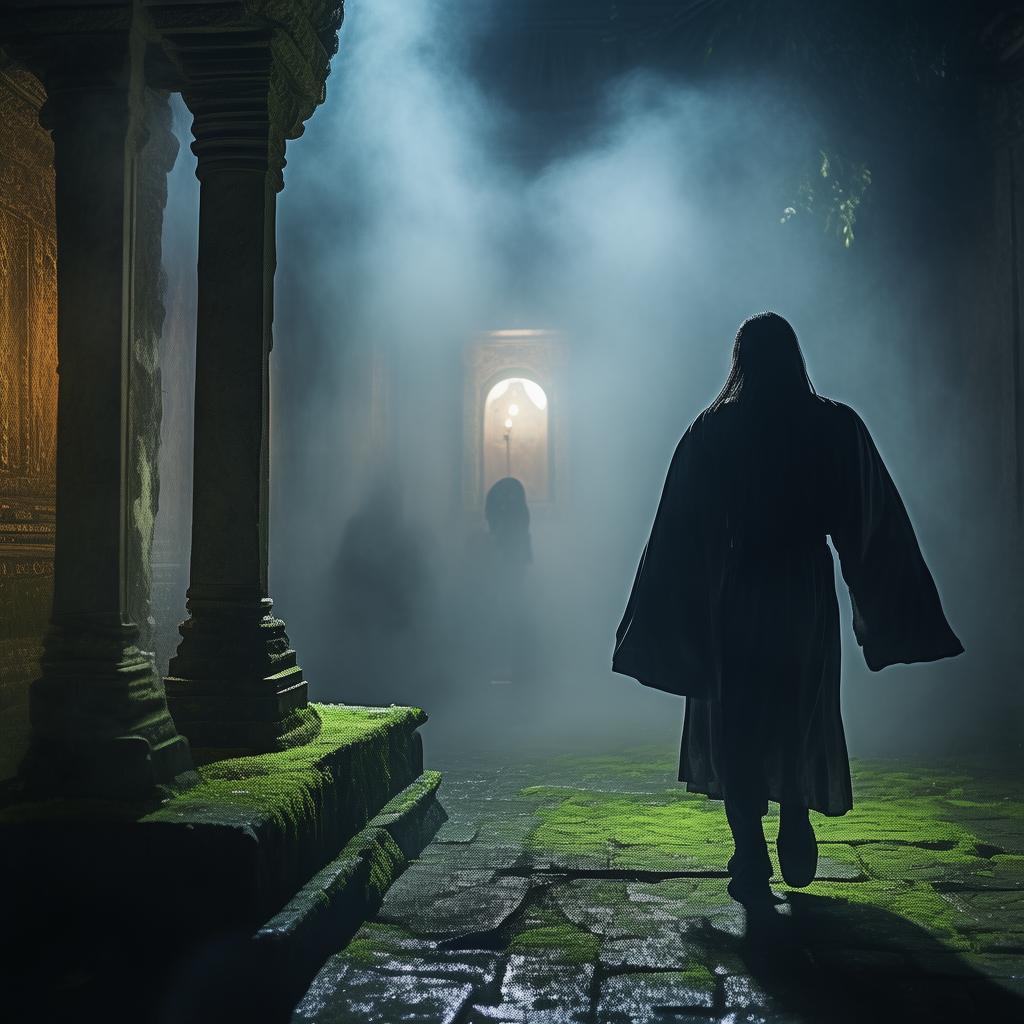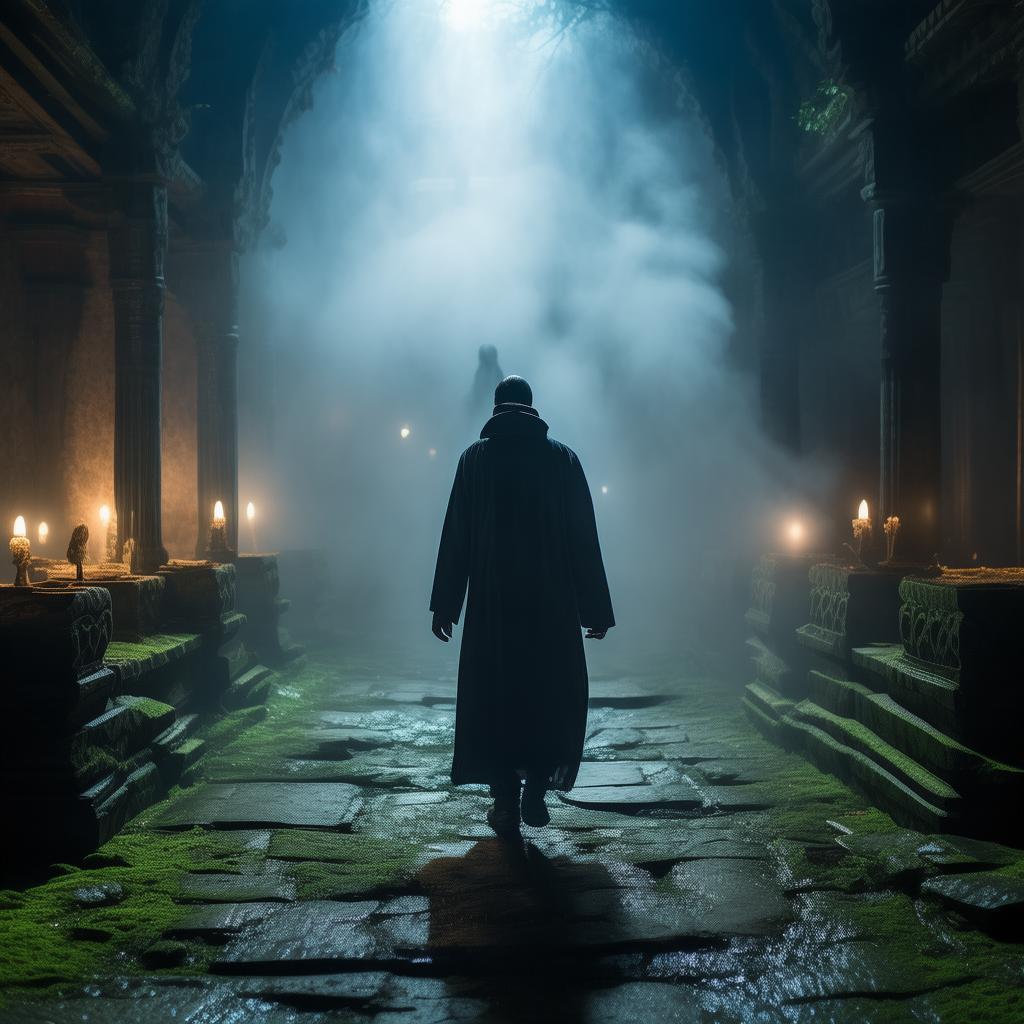The Phantom's Symphony: The Haunting of the Forgotten Organist
In the heart of the ancient city of Elysium, where the cobblestone streets whispered tales of yore, stood the grand cathedral of St. Mary's. It was a place of reverence, a sanctuary where the divine and the human intersected. Yet, in the shadowy depths of the cathedral's nave, there was a forgotten room, a chamber sealed off from the world, its walls adorned with dust and cobwebs. This was the sanctuary of the organ, a relic of a bygone era, its keys long untouched.
The organist, a man known only as Elara, had been a part of the cathedral for as long as the locals could remember. Her fingers danced upon the keys, her voice a haunting melody that seemed to touch the very soul of the building. She was a woman of few words, her presence as mysterious as the music she played. It was said that her compositions were not of this world, that they were the echoes of a past long forgotten.
One crisp autumn evening, as the sun dipped below the horizon, casting an ethereal glow over the city, Elara entered the sanctuary of the organ. She pulled the heavy curtain aside, revealing the ancient instrument that had been silent for decades. With a reverence that only true devotion could inspire, she began to play. The notes soared through the air, filling the cathedral with a symphony of haunting beauty.
The townspeople, who had grown accustomed to the organist's presence, were caught off guard by the sound. They paused in their daily routines, their eyes widening as the music seemed to envelop them, transcending time and space. It was as if the organ had never been silent, as if the melodies had always been there, waiting to be rediscovered.
As the night wore on, strange occurrences began to unfold. The lights in the cathedral flickered, casting eerie shadows on the walls. The pews, once silent, whispered faintly with the sound of footsteps. The townspeople spoke of seeing Elara's silhouette, a ghostly figure playing the organ with an intensity that defied the laws of nature.
Among the townspeople was a young woman named Clara, a music student who had come to Elysium to seek inspiration. She was drawn to the cathedral by the organist's music, her curiosity piqued by the tales of the haunted organ. One night, as the music reached its crescendo, Clara could no longer contain her desire to see the source of such beauty. She tiptoed into the sanctuary, her heart pounding with anticipation.
As she approached the organ, she saw Elara's hands moving with a fluid grace that seemed to defy explanation. The music was a symphony of sorrow and joy, a blend of the human and the divine. Clara was mesmerized, her eyes fixed upon the organist.
Suddenly, the music stopped. Elara turned to face Clara, her eyes reflecting the light of the candles that flickered around them. "You must understand," she said, her voice a mere whisper. "These are not my melodies, but the voices of those who came before me. They have been waiting for someone to hear them again."
Clara, though initially startled, felt a strange connection to the organist. She listened intently as Elara continued, "The cathedral was built on the site of an ancient temple, a place of power and worship. The music is the energy of those who once lived and loved here. It is a calling, a reminder of our shared humanity."
As the night wore on, Clara found herself drawn back to the cathedral, each visit revealing more about the organist and the music. She learned that Elara had been chosen by the spirits of the temple to be their voice, to carry their melodies into the future.

One evening, as Clara sat in the sanctuary, the organ began to play on its own. The music was different, more powerful, more intense. Clara approached the organ, her heart racing. As she touched the keys, the music grew louder, the air around her crackling with energy.
Suddenly, the sanctuary was filled with a blinding light. When it faded, Clara found herself standing in the middle of the ancient temple. The air was thick with the scent of incense, and the walls were adorned with carvings of gods and goddesses. In the center of the temple stood a grand organ, its keys made of precious stones and its pipes reaching up to the heavens.
Clara reached out to touch the organ, and her fingers were met with a warmth that seemed to come from within. She began to play, and the music that filled the temple was unlike anything she had ever heard. It was a symphony of life and death, of love and loss, of hope and despair.
As she played, the temple began to crumble, the carvings and statues disintegrating into dust. Clara knew that this was the end of the temple, but she also understood that the music would live on. She played until the temple was nothing but a heap of ruins, her fingers still moving upon the keys.
Back in the cathedral, Clara found herself in the sanctuary, the organ still playing. Elara stood beside her, her eyes filled with tears. "You have done it," she whispered. "You have become the voice of the temple, the bridge between the living and the dead."
Clara looked around, realizing that the cathedral was now a living testament to the power of music and memory. The organist had not only brought the spirits of the temple to life but had also connected the past with the present.
From that day on, Clara returned to the cathedral each evening to play the organ. The music she played was a blend of the melodies of the temple and her own compositions, a testament to the universal language of music and the enduring bond between the living and the dead.
The story of Clara and Elara spread throughout the city, becoming a legend that would be told for generations. The cathedral of St. Mary's remained a place of wonder and reverence, its organ a symbol of the eternal connection between the human and the divine.
✨ Original Statement ✨
All articles published on this website (including but not limited to text, images, videos, and other content) are original or authorized for reposting and are protected by relevant laws. Without the explicit written permission of this website, no individual or organization may copy, modify, repost, or use the content for commercial purposes.
If you need to quote or cooperate, please contact this site for authorization. We reserve the right to pursue legal responsibility for any unauthorized use.
Hereby declared.









